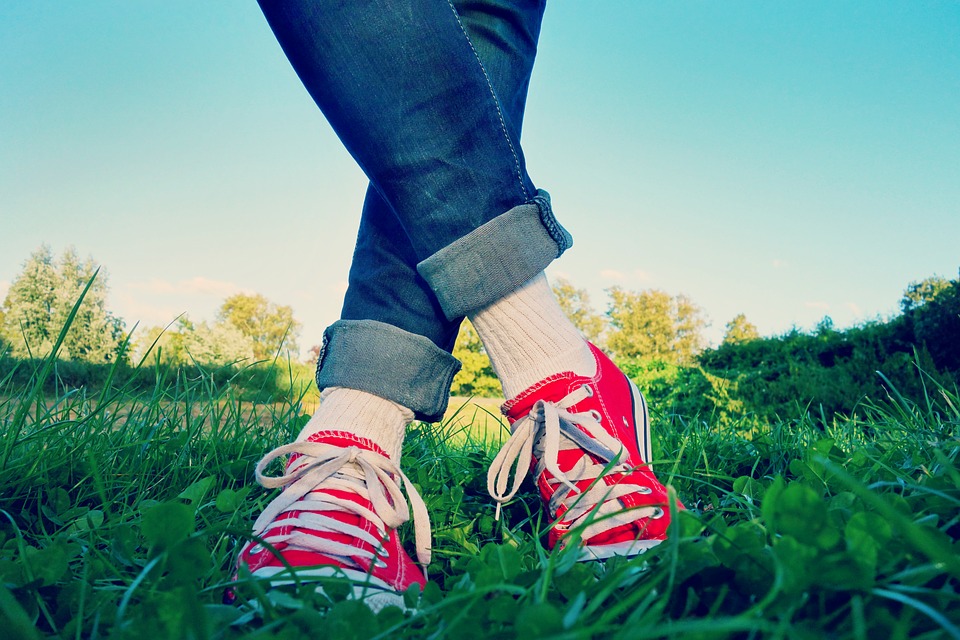Do you experience chafing when wearing denim jeans? Well, you aren’t alone. Countless men and women suffer from this problem when wearing certain types of clothes and garments. This phenomenon occurs when something — either your skin or a garment — rubs against your body, thereby causing a painful injury known as chafing. While chafing typically doesn’t require medical attention, it’s still something that most people want to avoid. So, if you’re battling this problem, consider the following tips to prevent chafing when wearing denim jeans.
Choose Skinny or Slim-Fit Jeans
The first step to preventing chafing is to choose the right type of jeans. We’ve talked about this before on our blog, but it’s worth mentioning again that there are more a dozen different types of jeans, ranging from relaxed and loose fit to skinny and slim fit. Some people assume that relaxed and loose-fit jeans are less likely to cause chafing because they offer extra space in the thighs and legs. They do in fact offer extra space, but this actually makes them more likely to cause chafing. The extra space in relaxed and loose-fit jeans means there’s a greater risk of your thighs and legs rubbing together, thereby causing chafing. To lower the risk of chafing, choose a slimmer type of denim, such as skinny or slim fit. Both of these popular types of denim are form fitting, so your skin generally won’t rub together while wearing them.
Consider Stretch Denim
Another tip to prevent your denim jeans from chafing is to choose stretch denim. For the average person, stretch denim jeans may look the same as regular denim jeans, but there’s one major difference between the two: Regular denim jeans are constructed solely of denim, whereas stretch denim jeans contain denim as well as an elastic material like spandex or polyester. This is important because the addition of just a small amount of elastic material increasing the jeans’ stretching capacity. How do stretch denim jeans prevent chafing? They won’t necessarily prevent chafing from occurring, but they will lower the risk of it happening. Stretch denim jeans contour to the shape of your body when worn to prevent skin-on-skin contact. You may still develop chafing from the denim rubbing against your body, but you won’t experience chafing from skin-on-skin friction.
Wear Shorts or Boxers Underneath
Both men and women alike can protect against chafing by wearing a pair of shorts of boxers underneath their denim jeans. It’s no secret that chafing is most common on the inside part of your thighs. When you walk or run, the inside of your thighs may rub together, or they may rub against your jeans. Either way, this friction can lead to chafing. A simple and effective solution, however, is to wear a pair of shorts or boxers underneath your jeans. Doing so creates an additional layer of protection over your thighs, preventing your skin or the denim fabric from rubbing against your thighs. Just remember to choose a thin, lightweight and comfortable pair of shorts or boxers. If they are too thick and heavy, they may restrict your ability to move, resulting in discomfort.
Moisturize Your Legs
Keeping your skin hydrated and moist is essential to protecting against chafing. If your legs are dry, friction is more likely to occur if your legs rub together. But not everyone has the same skin type. Some people have naturally drier skin than others. These men and women may struggle to wear certain types of jeans without experiencing chafing. If this sounds familiar, consider moisturizing your legs on a daily basis, preferably immediately before getting dressed.
Avoid Distressed Denim
It may look stylish — an appearance that’s preferred by many men and women — but distressed denim is more likely to cause chafing than traditional non-distressed denim. Distressed denim refers to a unique type of denim that’s constructed with patches of fraying and worn fabric, typically in the thighs and knees. They are designed specifically to look aged and worn in. Therefore, they contain areas of “distress” where the jeans are worn away. The problem with distressed denim jeans, however, is that the areas of missing of fabric may cause skin-on-skin contact. If a pair of distressed jeans have areas in the thighs where denim is missing or worn away, wearing them may cause your thighs to rub together. Of course, this can lead to chafing, especially if you wear the distressed jeans for eight or more hours a day. Stick with traditional non-distressed jeans to avoid this problem and achieve the highest level of comfort.
Get the Right Fit
Perhaps the most important tip to protect against chafing when wearing jeans is to get the right fit. If your jeans are too big, the excess space in the legs and thighs may cause friction on your skin. Eventually, too much friction will lead to chafing. Jeans that are too small also cause chafing, as the tight denim fabric rubs against the inside your legs and thighs. But if your jeans fit properly, you shouldn’t experience these problems. You can find the perfect fit by ordering your jeans from MakeYourJeans. As our name suggests, we allow you to make your own jeans by specifying your body measurements, preferred color, cut and other more.
Treat Chafing Injuries
If you notice chafing on your legs or thighs, try not to panic. With a little TLC, you can quickly recover from this otherwise common injury. First, you need to stop wearing whatever caused the chafing. Whether it was jeans, shorts, trousers, leggings or any other garment, stop wearing it until your skin has healed. Second, apply an antibiotic ointment to your chafed skin. Chafing is characterized by a friction injury of the skin, similar to road rash. As a result, there’s a risk of infection if the area is not kept clean and dry. Antibiotic ointment works to neutralize infection-causing bacteria while moisturizing your skin in the process.












